| |
The Biomass Industry's Wildfire Scapegoat
(August 2014)
Forest Thinning Will Increase Wildfire Risk
- by Charles Thomas, The Oregonian
As fires again rage across the West, senators from John McCain, R-Ariz., to Ron Wyden, D-Ore., echo the refrain "thin the forests" to prevent wildfires. Unfortunately, most of the advocated thinning will actually stoke the wildfires of the future rather than lessen their occurrence and impacts.
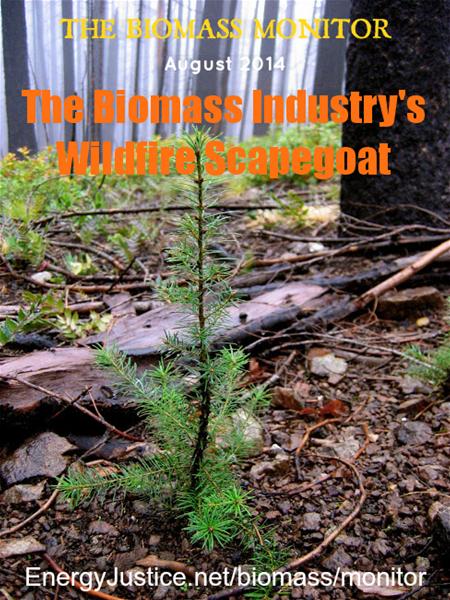
Thinning prescriptions proposed in Wyden's O&C legislation, designed by eminent foresters Jerry Franklin and Norm Johnson, will stimulate hotter, faster-growing wildfires that are more hazardous to fight. These prescriptions drastically thin forest canopies through timber sales designed primarily to generate timber volume, often leaving the slash and smaller shrubs and trees for non-commercial fire hazard reduction projects that are usually underfunded, unable to match the pace of canopy thinning projects and clear-cuts across the landscape.
Thinning forest canopies opens the stands to more sunlight, which encourages growth of fine fuels, including shrubs, small trees and grasses. Penetration of sunlight and dry summer winds effectively increases the active fire season by drying this new growth and leftover logging slash much faster than in adjacent unlogged forest stands, where greater canopy closure with tall shade columns retains moisture in soils and vegetation.
Active fire season begins weeks earlier in thinned forests and lasts weeks later, drastically increasing the time span during which dry forest conditions contribute to rapid fire spread. These dry, thinned forests often burn hotter and more erratically than unthinned stands, even causing retreat of firefighters when conditions become too dangerous to maintain fire lines.
READ MORE/COMMENT
Cutting the Trees We Need to Save the Forest
- by Bob Berwyn, The Colorado Independent
Even here, in a cool forest hollow near Tenmile Creek, you can feel the tom-toms. It’s a distant beat, born in the marbled halls of Congress, where political forces blow an ill wind across Colorado’s forests. Nearly every Western elected official with a clump of shrubby cottonwoods in his or her jurisdiction claims to be a forest expert. And when senators and congress members make forest policy, rhetoric usually trumps science — as is the case with laws requiring new logging projects that may wipe out some of the very trees needed to replenish forests in the global warming era.
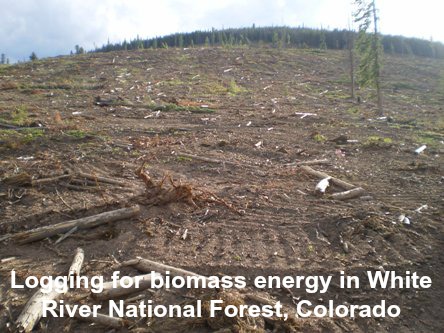
The drumbeat of support for logging is a political response
to the threat of a forest health crisis that no longer exists, and maybe
never did.
Showing
their natural resilience, Colorado forests are bouncing back from the
pine beetle outbreak that peaked between 2007 and 2009, when the bugs
spread across a mind-boggling 1 million acres of forest each year. But
by last year, bug numbers dropped back to natural levels — just enough
to take out a stand of sick, old trees now and then. Contrary to the
spin out of D.C., it’s nature’s way. After all, pine beetles are no
foreign invaders. They evolved with lodgepoles over millions of years to
drive forest death and rebirth.
But there are a lot of dead
forests out there. And so Congress — partially at the urging of
Colorado’s two Democratic senators, Mark Udall and Michael Bennet —
ordered the U.S. Forest Service to designate about 9.6 million acres of
National Forest lands across Colorado for expedited logging to battle
insects and disease. The fast-track means less environmental review —
and could mean logging on a scale not seen since the old timber quota
days, when Forest Service success was measured by how much timber it
produced.
READ MORE/COMMENT
Vermont Yankee: Out of the Fission and Into the Fire?
- by Ann Darling, Safe and Green Campaign
The Vermont Yankee nuclear power station in southeastern Vermont will close in December of this year after operating for over 40 years. As a member of the Safe and Green Campaign, which is made up of activists who live close to the nuke and whose homeland is the most in harm’s way, I have witnessed some pretty dirty tactics to keep this particular form of dirty energy going.
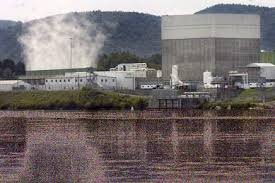
The litany of problems and deceit seemed never to end – a transformer fire, rotted cooling towers flooding the site with water, tritium leaks, lies under oath, multiple lawsuits, regulatory complicity and deafness, the silencing of the Vermont legislature, state inaction on the heating of the Connecticut River, bargaining in back rooms with the Governor to make a deal with an acknowledged devil (Entergy), the challenge to democracy embodied in federal law that says only “experts” can understand or address nuclear safety issues. And that’s not all, by far.
Now there’s a proposal to use the Vermont Yankee site for biomass with a tie in to a natural gas pipeline that’s trying to go through just south in Massachusetts. Lots of people are jumping at this like it’s actually the answer to everything. After all, there are heavy duty transmission lines there, a railroad running right by the front gates, a well-established lumber industry, a river, an interstate.
For four decades we’ve been living with the insanity of boiling water with radioactivity to generate electricity. We don’t think replacing that by burning biomass and emitting particulates and greenhouse gases, pressuring our beautiful forests, and burning more fracked gas makes any more sense than nuclear. As my friend Leslie said, “Bye-bye locally grown, truly green energy development. Hello, huge facility owned by yet another conglomerate of corporate investors.”
READ MORE/COMMENT
The Biomass Monitor is the nation's leading publication tracking the health and environmental impacts of biomass energy. We are accepting submissions at Josh
energyjustice.net.
In Solidarity,
Josh Schlossberg, Mike Ewall, and Samantha Chirillo
Editors, The Biomass Monitor
Back issues and blog: energyjustice.net/biomass/monitor
|
|
|
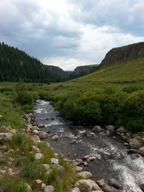
FROM THE EDITOR
- by Josh Schlossberg, Editor
Summer wildfire season is upon us, and that can only mean one thing: the biomass and logging industry ignoring science and common sense by pushing for more taxpayer-funded logging and biomass burning.
Yet another study has emerged contradicting the biomass industry's dubious claims that logging stops wildfire, this one demonstrating that big fires, such as California's Rim Fire, can "produce large areas of high-severity fire even in fuels-reduced forests." In other words, even if it was a good idea to stop backcountry fires--it's not--logging won't slow down the big ones.
Unfortunately, many politicians, much of the media, and even some environmental groups continue to mouth industry talking points by insisting that more publicly-subsidized logging is the answer. As we've seen with climate change, science alone isn't enough to turn the tides. If sanity is to reign, biomass busters need to be more vocal about the vital role wildfire plays in forest ecosystems while encouraging the only meaningful actions we can take: making homes--not backcountry forests--Firewise.
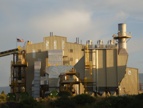
BIOMASS BREAKDOWN
Top 10 Biomass Stories in the News
Follow The Biomass Monitor on Facebook and Twitter for breaking biomass news.
1. Biomass Burning Kills 250,000 People a Year
2. Beetle-Kill Fuels Bioenergy
3. Chester, PA Residents Air Concerns over Covanta Incineration Plan
4. Residents Voice New Concerns on Gainesville, FL Biomass Incinerator
5. Proposed Incinerator a Bad Choice for Island
6. USDA Splurges Millions on Biomass Power Incinerators
7. Biomass Rejected in Favor of Solar in Springfield, VT
8. USDA Funds Genetic Engineering Research for Switchgrass
Biofuels
9. Tulsa, OK Chooses Incineration Over Composting
10. From Beetle Kill to Biomass

TAKE ACTION! Facebook (?)
In a local
anti-incinerator struggle, we recently promoted an action alert with a
catchy meme on Facebook. A couple hundred people - many of whom had been
strangers to us - responded to it. We now have their real contact
info, so we can contact them outside of Facebook, add them to our email
list, and invite them to local meetings and update them on local group
activities.
While we hate to advocate paying Facebook, we've found it
valuable to use strategically in a local fight. If you have a FB page
for your group, you can gain a number of “Likes” but those fans aren't
easy to reach because you can't see their profiles and interact directly
unless you “Friend” them, and any post to your page might be seen by
just 10-20% of your fans unless you pay to promote your post or page.
This is an awful long-term strategy, since it means constantly paying to
reach your fans. However, promoting your page, or events when you need
to turn people out, can bolster numbers.
Combining a Facebook promotion with our action alert system
allows you to gather real contact info so you can then email them
directly and not have to pay to make sure you reach your followers.
|
|






